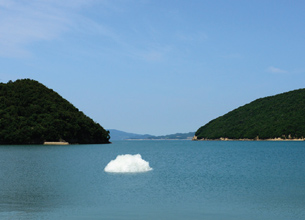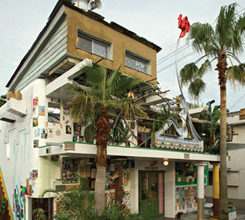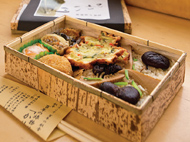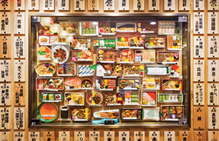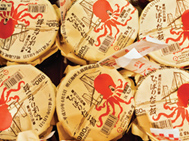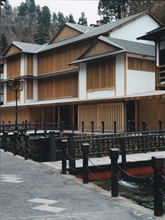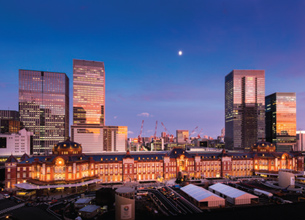- トップページ >
- 日本の魅力 >
- LOOKING TOWARDS THE FUTURE [英語][内閣官房] >
- Tourism Redefining travel
LOOKING TOWARDS THE FUTURE
Tourism - Redefining travel
Be it island hopping for an art festival, food shopping in the same shops as rofessional chefs or eating a bento on a bullet train, nowhere but Japan will you find such a single-minded determination to offer the highest-quality experiences. Factor in the exquisite restaurants and luxurious accommodation and you need to prepare to be spoilt by top-notch service wherever you go.
Q&A
Fram Kitagawa SETOUCHIARTTRIENNALE, DIRECTOR
Question: The first Triennale was in 2010. What's new in 2013?
Fram Kitagawa: It's now 12 islands in the Seto Inner Sea – we added five to the programme. There are around 200 works of art by artists representing 24 countries and territories. It takes about a week to see everything.
Q: How has art transformed these islands?
FK: The islands' population had fallen and communities had gone into decline. Contemporary art has given locals something to be proud of. It has also offered people a chance to rediscover the islands' natural beauty and given locals a chance to interact with the outside world. On Ogishima, the schools were shut because there were too few children. But the art festival has brought families back and next spring the schools will reopen.
setouchi-artfest.jp/en

FOREIGN VISITORS
Welcome return
Japan's tourism sector suffered for several months after the devastating Tohoku earthquake and tsunami in 2011. However, now visitors are returning in droves: this year, the number of tourists from overseas is expected to top 10 million – a record. This is raising hopes that Japan's long-term goal of 20 million tourists a year is attainable. Since July, relaxed visa requirements for citizens from Thailand, Malaysia, Vietnam, the Philippines and Indonesia have lowered barriers and given extra momentum to the tourism boom.
mlit.go.jp/kankocho/en
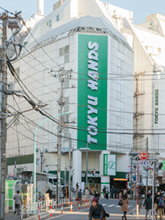
TOKYU HANDS
Shop till you drop
As every Tokyo citizen knows, there's only one shop to go to when all others fail: Tokyu Hands. It's hard to do justice to the contents of this extraordinary emporium. From tools and kitchen equipment to travel goods and stationery, the depth and breadth of the goods on offer is stunning.
The Shibuya branch is an institution. Opened in 1978, it boasts a stock of 150,000 items and more than 260 knowledgeable staff who go out of their way to find just what customers are looking for. All this and a cheerily upbeat soundtrack to shop by.
tokyu-hands.co.jp/foreign.html
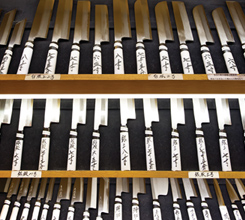
KITCHEN ESSENTIALS
Happy choppers
Kama-Asa Shoten, in Tokyo's Kappabashi district, is a chefs' favourite. Founded in 1908, it sells more than 1,000 knives along with castiron pans, wasabi graters and other essentials.
kama-asa.co.jp/en
TRAIN MEALS
Bento on wheels
What makes a long-distance train ride in Japan pleasurable is the perfect meal: a bento box made from the season's freshest ingredients. These ekiben(from the words for tation and bento) aren't your average takeaway meals: they're as beautiful as they are tasty, offering a sample of regional recipes.
Ekibenya Matsuri at Tokyo Station sells more than 170 types of bento box meals. Takomeshi with octopus from Takamatsu, grilled Yonezawa beef from Yamagata and Shake-ikura with salmon and roe from Sendai are all shipped in daily.
nre.co.jp
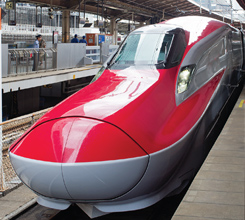
TRAIN TRAVEL
Right track
With every new generation, Japan's Shinkansen run more quickly, quietly and safely. The latest addition is East Japan railway's E6 Super Komachi (above), which travels between Tokyo and Akita at top speeds of 300km/h.
Meanwhile, Central Japan railway has resumed testing on the Maglev, the world's fastest magnetic-levitation train that can reach 500km/h. Offering travel at a different pace is JR Kyushu's Seven Stars in Kyushu, a sleeper train with 14 wood-panelled suites, a dining car and bar.
english.jr-central.co.jp/index.html;
jrkyushu.co.jp/english/index.html
www.jreast.co.jp/e/index.html
HOSPITALITY
Staying power
The Tokyo Station Hotel reopened last year after a lengthy refurbishment. Set in the iconic redbrick portion of the station dating back to 1914, the 150-room property combines impeccable service and modern luxury with an interior that recalls old-world travel.
For a more traditional experience, Fujiya Inn (left) in the scenic hot-spring town of Ginzan is a family-run ryokan that took the bold step of hiring architect Kengo Kuma for a complete makeover of its old wooden building.
thetokyostationhotel.jp/;
fujiya-ginzan.com/english
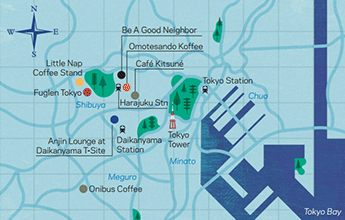
COFFEE
Best brews
So passionate are Tokyo's baristas about coffee making that they elevate it to an art form. From the sourcing, roasting and blending of beans to the brewing techniques (drip, steep, boil, pressure and siphon) and the final pour, their meticulous approach to the whole process borders on the fanatical.
Grab an espresso at standing bars Omotesando Koffee or Café Kitsuné, or a drip-brew at Little Nap Coffee Stand, the Be a Good Neighbor kiosk or tiny café Onibus Coffee. If a more leisurely experience appeals, settle in an armchair with a cup of Maruyama Coffee's latest roast at Tsutaya's Anjin Lounge.








